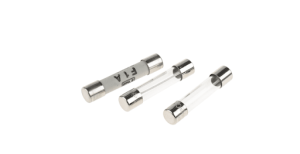What Are Electric Fuses

Fuses are devices used to prevent damage from high electrical currents. Most fuses are made of metal, which melts when subjected to excessive current. The current flow is cut off, protecting the circuit from further degradation, thanks to this interruption.
The purpose of a fuse in an electrical circuit is to prevent harm from occurring due to an overflow of current. If the current flowing through a fuse is too high, the fuse’s conducting material will melt. This prevents damage to the circuit by stopping the current. A fuse is a device designed to prevent damage to electrical equipment caused by overcurrent. Fires and property damage can be avoided in the case of an overcurrent by using fuses to interrupt the circuit.
Electric Fuses Benefits
Over a century after their invention, fuses continue to serve a vital function in both domestic and industrial electrical systems. Despite the fact that circuit breakers have essentially replaced fuses in modern structures, fuses continue to have several benefits that make them worth considering.
- Fuses are commonly used in place of circuit breakers because they are less expensive, simpler to reset after an overload, and may isolate many circuits from one another.
- Fuses are an integral component of any electrical infrastructure. Overload protection devices are installed to prevent electrical fires in a home or business.
Electric fuses come in a wide variety of sizes and styles, so it’s crucial to pick the one that’s best for your application. Fuses are a crucial safety feature in any electrical system. They prevent overcurrent from destroying electronic circuits and parts. Fuses for electric circuits come in a wide range of ampere ratings and sizes.
What Are 3 Different Types of Fuses?

There must be circuit protection in an electrical system in the event of an overload. Fusework is one technique for accomplishing this. Fuses are protective components that melt when subjected to excessive current. This prevents any further damage to the system by breaking the circuit.
Fast-blow fuses, slow-blow fuses, and time-delay fuses are the three most common types. Fuses that blow quickly are made to stop a lot of electricity at once. Slow-blow fuses can withstand higher currents before they blow, therefore they are ideal for protecting against minor power surges. Fuses with a time delay are used to prevent damage from temporary increases in current.
When there is too much electricity flowing through an electrical circuit, a fuse will blow to prevent any damage from occurring. Fuses are made of metal or another conductive substance that melts when subjected to excessive current. This prevents damage to the circuit by stopping the current.
- Fuses can be either ceramic (the most common), glass (a less common variety), or semiconductor.
- Some fuses can withstand extremely high temperatures, and they are constructed of ceramic. Used frequently in electrical distribution systems and other high-power applications.
- Fuse glass is formed of a special type of glass that breaks apart when subjected to excessive electricity. A blown fuse can now be seen, signaling the need for a replacement.
To make a connection with low resistance, semiconductors like silicon are utilized in semiconductor fuses. Low-voltage applications make extensive use of them.








